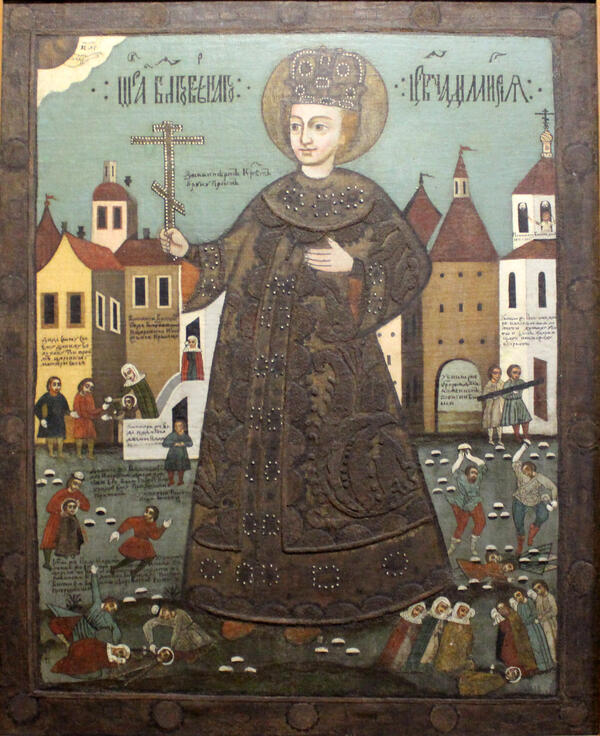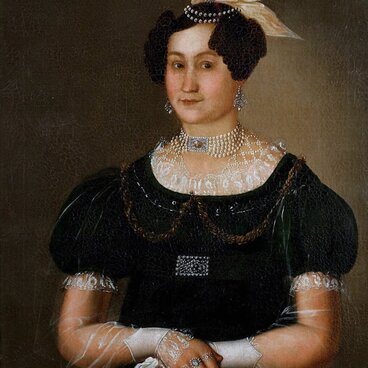The museum houses a large collection of iconographic materials with images of Uglich saints, the most famous of whom are Tsarevich Dmitry (a son of Ivan the Terrible) who died in Uglich in 1591, and Prince Roman, the ruler of the Uglich Principality in the 13th century. Distinguished among these images is a group of iconographic portraits (“parsunas”) of Tsarevich Dmitry.
The tsar’s son was canonized in 1606 as “the blessed Tsarevich Dmitry of Uglich, the Wonderworker of Uglich and Moscow and All Russia”. The cult of Dmitry gained exceptional importance in the city, his icons were in every church, the holidays dedicated to Tsarevich Dmitry gather crowds (up to this day), his memorial day is on October 19.
The tsarevich became a national saint, and for a good reason based on history. After the arrival of the tsar’s son in the city, the citizens of Uglich began to pin great hopes on him as related to the future elevation of the city, called him the Uglich sovereign, and were confident about his right to the royal throne. After the death of Dmitry and the long period of the Time of Troubles, an idea emerged to imprint the memory of the “sovereign” in the very name of the city. The “Uglich Chronicle” compiled at the end of the 18th century, retained this urgent desire, even a demand: the city that is “above its ancient naming” should adopt a new name, “the name of Tsar-Uglich will be given to it from now on!”.
At the same time, in the 18th century, images of Dmitry, painted on canvas, supplemented with scenes of his life and provided with explanatory inscriptions, became widespread. This is a specific kind of pictures, distinct from icons: these paintings have rather historical or memorial significance, they are made in line with the tradition of “parsuna” painting. These parsunas exist in large numbers, they have become a distinguished and original part of the city’s artistic tradition. The aforesaid “Uglich Chronicle” refers to a local custom of welcoming official “distinguished guests”,
The tsar’s son was canonized in 1606 as “the blessed Tsarevich Dmitry of Uglich, the Wonderworker of Uglich and Moscow and All Russia”. The cult of Dmitry gained exceptional importance in the city, his icons were in every church, the holidays dedicated to Tsarevich Dmitry gather crowds (up to this day), his memorial day is on October 19.
The tsarevich became a national saint, and for a good reason based on history. After the arrival of the tsar’s son in the city, the citizens of Uglich began to pin great hopes on him as related to the future elevation of the city, called him the Uglich sovereign, and were confident about his right to the royal throne. After the death of Dmitry and the long period of the Time of Troubles, an idea emerged to imprint the memory of the “sovereign” in the very name of the city. The “Uglich Chronicle” compiled at the end of the 18th century, retained this urgent desire, even a demand: the city that is “above its ancient naming” should adopt a new name, “the name of Tsar-Uglich will be given to it from now on!”.
At the same time, in the 18th century, images of Dmitry, painted on canvas, supplemented with scenes of his life and provided with explanatory inscriptions, became widespread. This is a specific kind of pictures, distinct from icons: these paintings have rather historical or memorial significance, they are made in line with the tradition of “parsuna” painting. These parsunas exist in large numbers, they have become a distinguished and original part of the city’s artistic tradition. The aforesaid “Uglich Chronicle” refers to a local custom of welcoming official “distinguished guests”,



